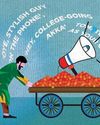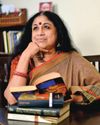
More than a decade ago, I met Abhijit Banerjee and Esther Duflo to discuss joining a small centre they had started at the Massachusetts Institute of Technology (MIT) called PAL, or the Poverty Action Lab. It was subsequently renamed J-PAL to recognise a generous endowment by an alumnus. After my master’s at the Delhi School of Economics, I had joined the IAS, attracted by the idea of working in development policy in the field. But I was often puzzled to see how so many of our key decisions were not based on any semblance of rigorous evidence. After a few years of working in the private sector, I was itching to go back to my roots. Talking to them in J-PAL’s three-room office, I was drawn to the huge potential of their very simple vision: What if policymakers in governments, NGOs, and foundations could base their decisions on scientific evidence rather than instincts, ideology or inertia?
Even though J-PAL was then only five years old, pioneers like Abhijit, Esther, Michael Kremer and Rohini Pande had already launched a number of field research studies in India and Kenya. Their studies would cement the role of randomised evaluations, or RCTs, as an important tool in the field of economics to understand what poverty alleviation programmes work or not, and why. And J-PAL, along with our partner organisation, Innovations for Poverty Action (IPA), had begun to work with a number of other economists to run their research in many countries to expand the knowledge base of what works or not in global development. The dilemma they faced when I met them was even more challenging: How do we make sure that the results of this research do not just stay in academic journals but actually make their way to the policymakers who need it most in their decision making? How could such evidence inform programmes that could be scaled up to reach millions?
Diese Geschichte stammt aus der October 27, 2019-Ausgabe von THE WEEK.
Starten Sie Ihre 7-tägige kostenlose Testversion von Magzter GOLD, um auf Tausende kuratierte Premium-Storys sowie über 8.000 Zeitschriften und Zeitungen zuzugreifen.
Bereits Abonnent ? Anmelden
Diese Geschichte stammt aus der October 27, 2019-Ausgabe von THE WEEK.
Starten Sie Ihre 7-tägige kostenlose Testversion von Magzter GOLD, um auf Tausende kuratierte Premium-Storys sowie über 8.000 Zeitschriften und Zeitungen zuzugreifen.
Bereits Abonnent? Anmelden

William Dalrymple goes further back
Indian readers have long known William Dalrymple as the chronicler nonpareil of India in the early years of the British raj. His latest book, The Golden Road, is a striking departure, since it takes him to a period from about the third century BC to the 12th-13th centuries CE.

The bleat from the street
What with all the apps delivering straight to one’s doorstep, the supermarkets, the food halls and even the occasional (super-expensive) pop-up thela (cart) offering the woke from field-to-fork option, the good old veggie-market/mandi has fallen off my regular beat.

Courage and conviction
Justice A.M. Ahmadi's biography by his granddaughter brings out behind-the-scenes tension in the Supreme Court as it dealt with the Babri Masjid demolition case

EPIC ENTERPRISE
Gowri Ramnarayan's translation of Ponniyin Selvan brings a fresh perspective to her grandfather's magnum opus

Upgrade your jeans
If you don’t live in the top four-five northern states of India, winter means little else than a pair of jeans. I live in Mumbai, where only mad people wear jeans throughout the year. High temperatures and extreme levels of humidity ensure we go to work in mulmul salwars, cotton pants, or, if you are lucky like me, wear shorts every day.

Garden by the sea
When Kozhikode beach became a fertile ground for ideas with Manorama Hortus

RECRUITERS SPEAK
Industry requirements and selection criteria of management graduates

MORAL COMPASS
The need to infuse ethics into India's MBA landscape

B-SCHOOLS SHOULD UNDERSTAND THAT INDIAN ECONOMY IS GOING TO WITNESS A TREMENDOUS GROWTH
INTERVIEW - Prof DEBASHIS CHATTERJEE, director, Indian Institute of Management, Kozhikode

COURSE CORRECTION
India's best b-schools are navigating tumultuous times. Hurdles include lower salaries offered to their graduates and students misusing AI